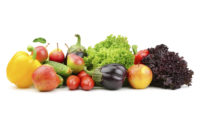Picture the quality of your food products as a boat floating in the sea. On a perfect day, the sea would be completely calm and still, making predictions about the general safety and shelf life of these products relatively easy. But, we know that seas are rarely calm. When winds pick up, your small boat is rocked, rising and falling on the waves. These conditions could be viewed as the day-to-day quality or microbial load of your products—not exactly perfect but within a reasonable range for planning and management. Sometimes though, the sea can become very rough. Perhaps a huge wave arises out of nowhere that can actually sink your boat. This is the situation with food safety recalls linked to foodborne pathogens.
Calculating the economic impact of a food safety recall is relatively simple. Take the total value of your company—your assets, brand equity, hard work, etc.—and divide by one significant recall. These “big waves” can cost you everything. Just ask Peanut Corp. of America, a Lynchburg, Va., peanut processing company who closed in 2009 due to a Salmonella outbreak, or New Food Classics, a Canada-based meat processor who closed its doors in 2012 because of a recall involving E. coli O157:H7.
But, what about those smaller waves, the ones that affect quality and shelf life of your products?
Although the economic impact of poor food quality is more difficult to calculate, it can nonetheless impact the profitability of your business. When product quality is inconsistent, a manufacturer may overproduce to compensate for this uncertainty, or perhaps limit expansion into larger markets where longer transportation times could affect product quality. Production losses due to food spoilage occur every day and can significantly affect your bottom line. So, what causes these unstable food quality issues? More importantly, what can be done to minimize them and settle your rocking boat?
Factors affecting food quality
Foods are complex systems, and spoilage can occur due to multiple factors. Depending on the type of product, spoilage or reduced shelf life can be influenced by temperature abuse, light, moisture/water activity, air and endogenous enzymes, to name a few. Failing to control these factors can not only lead to premature spoilage, but may also accelerate other factors, such as lipid oxidation and the proliferation of unwanted microorganisms.
Microorganisms and food spoilage
Loosely defined, the world of microorganisms related to food spoilage breaks into two groups—bacteria and yeast/molds. The bacterial group can be further sub-divided into “Gram-Positives” and “Gram-Negatives.”
“Gram-Positive” bacteria include Lactic Acid Bacteria (LABs), such as Leuconostoc and Lactobacillus species, as well as spore formers, such as Bacillus and Clostridium species. “Gram-Negative” bacteria include coliforms, Hafnia, Shewanella and Pseudomonas species. The yeast and molds group can also be further divided into numerous categories based on the physiological nature of the organisms themselves.
Certain microbes, such as those used to produce cheese or ripen meat, have a long history of safe use in food. Elevated levels of most other spoilage organisms, although not typically related to foodborne illness, could be considered unsafe. With this in mind, the first step toward improving your food’s shelf-life quality is to identify the type of organisms that are affecting your products. Understanding this will help you determine the possible source of contamination and decide on a course of action.
Determining “who” is there
Traditionally, standard microbiological techniques, such as culture plating on selective or semi-selective media, have been used to isolate and identify the type of organisms that are present in a food sample. This work can be done by an internal quality control team or through numerous external contract labs. Although reliable, these methods are often slow and may not capture the entire picture. More recent advances in diagnostics have led to the development of biochemical tests as well as DNA-based molecular methods for microbial quantification, identification and tracking. These newer techniques provide faster results and, in some cases, heightened specificity over traditional techniques. They may also reveal spoilage organisms that are present but at levels too low to be enumerated via traditional methods or to be grown in commonly used non-selective enrichment media.
Although most of these more advanced diagnostic platforms have been developed with microbial food safety in mind, there are some on the market today that can help with food spoilage diagnostics—a growing area of research and development.
Another benefit of these newer tools is that they can help producers track specific groups of spoilage organisms throughout their manufacturing processes. The ability to identify the organisms that are causing the spoilage defect and show where they may be coming from in your plant or process can significantly reduce the time required to define and mitigate the risk.
Sources of microbial spoilage
Microbial contamination can come from many sources, but the role of the plant environment and its processing equipment can be significant factors. Proper sanitation procedures to keep the facility and equipment clean can help control against this risk.
Another, sometimes more conspicuous, source of contamination can come directly from the ingredients that are added to the foods. Spices, herbs and other dry ingredients, for example, are notorious for carrying high levels of Bacillus and mold spores. Even though they may be added to products at relatively low levels, these organisms are very resilient to heat and can proliferate in many food systems. To address this hurdle, irradiated herbs and spices are often used. Although more costly and not always available for every dry ingredient, these irradiated versions can make a significant improvement in food quality without compromising flavor.
Raw vegetables and cooked meats can carry microbial spores as well as other spoilage organisms, such as lactic acid bacteria and various “Gram-Negative” bacteria. Washing vegetables in an antimicrobial solution prior to incorporating them into food products, or using individual quick-frozen (IQF) vegetables, can help remove significant levels of these organisms. Closely monitoring the microbial levels on your incoming cooked products can also have a positive impact on shelf-life quality.
Product processing and formulation
In the end, no matter how clean your ingredients or your plant are, microbes will find their way into your products. At that point, your manufacturing processes and the product composition are your last lines of defense.
One of the most reliable antimicrobial processes is heat. If manufacturing your food product includes a cooking step, it’s important to validate that this thermal process is effective at limiting microbial survival. It is also important to realize that differing product densities, compositions, packaging and other factors can make an efficient heating time and temperature for one product ineffective for another.
Product formulation also provides a significant opportunity to lower or mitigate the risk of poor product quality. When feasible, reducing the pH of your product through the addition of lactic, acetic or other organic acids can help ward off the growth of some organisms. Keeping the water activity at a relatively low level of <0.9 can help slow the growth of microbes as well. However, it’s important to remember that reducing pH and keeping the water activity in check is not effective against all microorganisms.
Adding synthetic antimicrobials, such as sodium benzoate, potassium sorbate, and sodium diacetate, are time-tested methods for reducing the unwanted growth of certain organisms. Although these products are effective, trends in natural, organic and clean labeling along with other market drivers have created an opportunity for more natural antimicrobial controls. Bacterially-derived fermentates and peptides, plant extracts, enzymes, and blends of these can provide effective control of unwanted organisms while improving brand image and, in many cases, enhancing a product’s flavor and other sensory qualities.
In summary, your choice of irradiated spices, the use of a validated heating step (if applicable), the pH and water activity, the addition of synthetic or natural antimicrobial ingredients in conjunction with good manufacturing practices, a robust hazard analysis and critical control point (HACCP) plan and routine third-party audits are all factors that can contribute to producing products that maintain optimal shelf-life quality.
Although food quality organisms do not draw the scrutiny warranted by those causing foodborne illnesses, food spoilage issues that can impact your bottom line are a daily concern. Understanding the type of spoilage and other quality issues, such as which culprits are responsible and where they are coming from, can significantly improve your chances of reducing that risk and can be key in helping to calm the rough waters of food quality.



